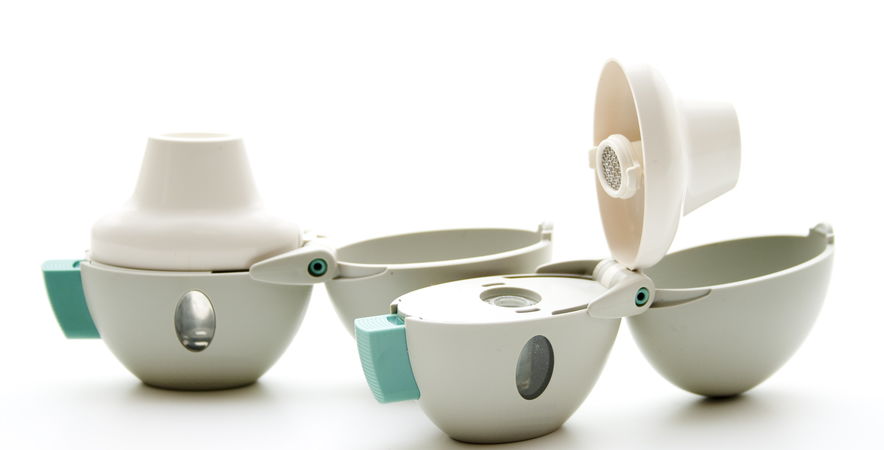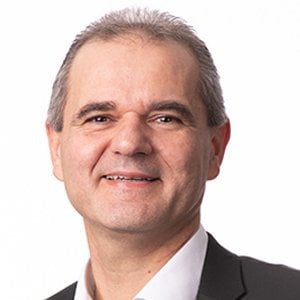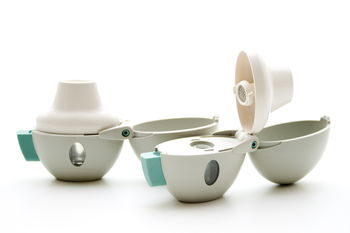Through the automation glasses

It’s not only the look, functionality or medical benefits that are critical in the development of new medical devices but rather, product designers often underestimate the automation capability of the design for later mass production. The automation specialists of PIA Automation know what consequences this can have and the essential role manufacturing design plays.
For example, an inhaler for asthma was initially mounted by hand and now in order to serve higher quantities, it should be converted to an automated production system. However, the planning was followed by an unwelcome surprise: the product design was not suitable for the automation process. Therefore a completely new design had to be developed, including new tools, lengthy approval processes and additional development costs.
“This is a common problem in the development phase of medical devices such as inhalers,” states Lothar Mehren, Head of the Medical Division at PIA Automation. "Consideration is primarily given to optical, aesthetic and medically relevant details as well as the marketability of the products. Unfortunately, later assembly is not considered. Often a fully automated production will then mean significant overhead in the supply of components and joining processes, or costly new development, including time-consuming approvals. However, when automation experts collaborate on concept and product development, known as design for manufacturing, assembly aspects can be considered in advance. We are already looking through automation glasses in product design," says Lothar Mehren. "The customer then benefits from lower development time, lower development costs, greater process reliability and a significant reduction in project risk." PIA Automation has many years of experience in design and design consultancy in order to anticipate all aspects of the subsequent assembly process at an early stage.
Growing market for reusables
In the field of medical technology, PIA Automation sees two developments in terms of automated production. On the one hand, there is the production of classic disposable items such as cannulas, disposable pens or autoinjectors, which can be produced and well automated in high volume. In addition, the market for more valuable reusables is growing with increasingly integrated electronics such as insulin patch pumps. In the development of reusables, PIA also provides expertise for the automated production of small-scale electronic assemblies as well as design know-how. This includes the assembly of very small parts, the handling of printed circuit boards, plugs, as well as processes such as soldering and the joining of extremely small components. PIA can do both large-scale production as well as providing the necessary infrastructure for small series. In particular, the field of medical technology and pharmaceuticals is initially about the approval of new products enabling the production of technical and clinical samples. This is possible using PIA’s uncomplicated semi-automatic machines before the products are fully and automatically manufactured, even after needed approval with corresponding demands involving large series.
What should initially be considered in the construction and design of high-quality electronic medical devices, are some fundamental aspects that are relevant in the assembly.

Lothar Mehren (PIA Amberg)
"PIA is already looking through automation glasses in product design."
Easy to feed
Firstly, the simple feed process of individual parts should be considered. For example, purchased parts such as springs, should have close-fitting turns at the beginning, the middle and the end, so that the springs cannot interlock and pinch when singulated. The same applies to plastic parts, as they must not interlock in the spiral conveyor. In addition, they require some orientation aids or query edges for a safe feed. Thus, parts can be supplied safely and within the specified cycle time. Should the parts not be designed in this manner, expensive transport solutions, such as a tray solution with individual cavities for different plastic parts, or a blister feed, are required. In the case of springs, with the use of a blister belt, springs are inserted individually.
Defined joining processes
Another aspect is the simplest possible assembly of plastic parts. This requires defined joining processes. The parts should have chamfers, orientation guides, or bevels to make them easier to nest. Also, the geometric design of the parts should be planned so that they fit together well.
With respect to the design of medical devices such as inhalers, attractive design as well as comfort should also be taken into account during automation production capability.
(Image: AdobeStock)
Take into account the degrees of freedom
In addition, there are certain degrees of freedom for joining the plastic parts. The less freedom of movement the components have, the tighter the assembly tolerances become and the more costly the solution for precise positioning. This means the corresponding station would have to be highly complex in order to be able to achieve tolerances in the hundredth or thousandth range. Since it is never a single plastic part, but rather several parts, injection molds with multiple cavities must be installed together. This results in tolerances to be respected and leaves little room for installation. However, design degrees of freedom are rarely considered.
Optimal positioning
In addition, components must maintain their exact position during assembly so they do not turn or fall out. For this purpose, they should be attached directly to the component’s specific retaining edges or latches. When they are not, a workpiece carrier is required for transport which further increases the costs of the system. The positioning is facilitated only if a single installation position of the plastic part is possible. This is already considered in the construction of PIA after the Poka-Yoke error minimization principle.
"Production as part of the design"
Not every product designer is familiar with requirements regarding the assembly of products, so that the early involvement of automation specialists such as PIA does make sense. "We want to make designers aware of the fact that manufacturing is a part of product development," says Lothar Mehren." Each area contributes its know-how, in order to be able to produce an all-round coherent product." Process security as well as cost and risk minimization should be conclusive arguments for an early look through automation goggles.
